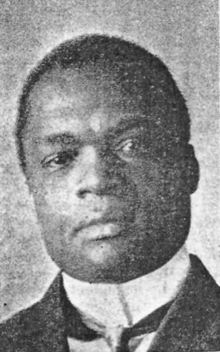
On July 18, 1855, Colonel John H. Wheeler, who had just been appointed U.S. Minister to Nicaragua, arrived in Philadelphia with plans to travel on to New York City and then by ship to Central America.
A well-known North Carolina slaveholder, he was accompanied by his family and three of his slaves — Jane Johnson and her two sons. Wheeler knew very well that traveling with Johnson and her two sons was not a good idea as they were enslaved property and could be freed at
any time in Philadephia, where slavery was illegal. Pennsylvania had in 1780 passed what was the country’s first emancipation law, making the state the first place in the history of the world to begin the end of slavery, according to historians.
Per a clause under the 1780 law, slaveowners visiting Philadelphia, Pennsylvania were allowed to keep an individual enslaved for six months. But in 1847, some years before Johnson and her slaveowner arrived in Philadelphia, authorities in Pennsylvania repealed that clause.
“That meant that now, the moment someone brought the slave into the state, that slave was free,” Paul Finkelman, an American legal historian, was quoted by Smithsonian Magazine.
All in all, the 1780 law turned Philadelphia into a mecca for free Blacks in America. History says that throughout the early 1800s, many Black migrants who wanted to escape southern slavery fled into the Pennsylvania counties, where many of them were helped by “conductors” on
the Underground Railroad towards New York and on to Canada. But this became difficult following the passage of the federal Fugitive Slave Law in 1850, which compelled northern citizens to help in tracking and returning fugitive slaves back to their southern owners.
The law threatened anyone who assisted runaway slaves with prosecution and imprisonment. And it was during this period that antislavery societies including the Vigilant Association of Philadelphia (later the Vigilant Committee) emerged in Pennsylvania, aiding people
seeking freedom with shelter, food and direction. Kidnappers at the same time searched for runaway slaves and freed Black people to sell them back into slavery.
In July 1855 when Wheeler and Johnson alongside her children arrived in Philadelphia, Wheeler knew that per the laws, the moment someone brought a slave into the state, that slave was free. So, he told Johnson that if anyone asked her who she was, she should say she was a free
Black woman traveling with a minister. On July 18, before Wheeler made plans to move with his family including Johnson and her two children to Central America by way of New York, he decided to have dinner at the Bloodgood’s Hotel on the river next to the ferry that would take
them to Camden and on to New York. Even though he dined away from Johnson and her sons, he watched them closely. Johnson’s plan at the time was to escape in New York but she realized she could do that now. “I and my children are slaves, and we want liberty,” she told a Black
restaurant worker at the hotel, who promised to help, an article by the Smithsonian Magazine said. By 4:30 p.m. on July 18, 1855, the young Black restaurant worker rushed to the office of the Vigilance Committee, which was within the Pennsylvania Anti-Slavery Society (PASS)
office. The worker had drafted a note about Johnson’s plea. He sent the note to abolitionist William Still, who worked as a clerk at PASS and was the leader of a team of four that aided those seeking freedom. With just 30 minutes for Wheeler to leave Philadelphia,
Still told Passmore Williamson, the only White man on his team, of Johnson’s plea. By the time Still and Williamson, alongside five Black dockworkers, got to Johnson, she was about to leave with Wheeler and her two sons, aged six and 10.
She was seated on a steamboat’s upper hurricane deck with her two boys. Johnson, according to the article by Smithsonian Magazine, later testified to the following exchange under oath.
“Are you traveling with someone?” Still asked Johnson.
Johnson said Yes.
“Are you traveling with someone?” Still asked Johnson.
Johnson said Yes.
“I want to speak to your servant and tell her of her rights,” Williamson told Wheeler.
“If you have anything to say, say it to me. She knows her rights,” Wheeler said.
Williamson asked Johnson if she wanted her freedom.
“If you have anything to say, say it to me. She knows her rights,” Wheeler said.
Williamson asked Johnson if she wanted her freedom.
She said she did but belonged to Wheeler. “You are as free as your master,” Williamson told her. “If you want your freedom, come now. If you go back to Washington, you may never get it.”
• • •
Missing some Tweet in this thread? You can try to
force a refresh

















